How to Protect Your Home and Household From Wildfires: Safety Precautions and Considerations
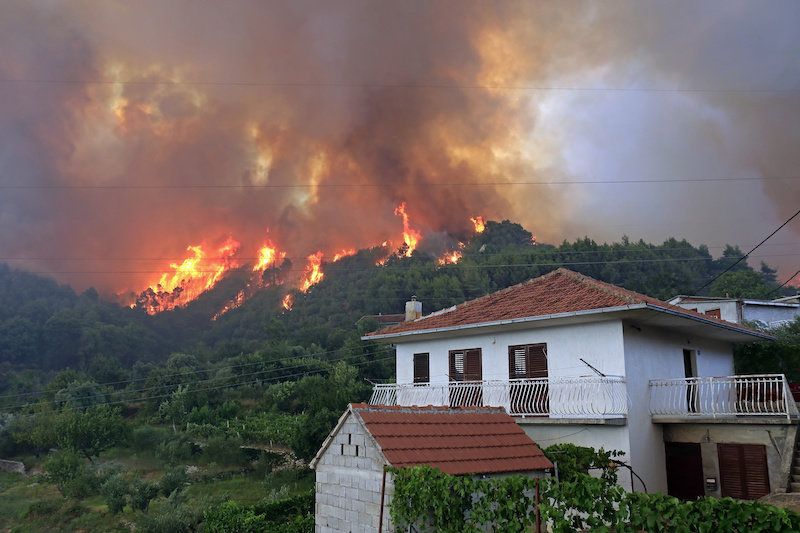 A wildfire, also known as a wildland fire or rural fire, is an uncontrolled fire that spreads to large areas of land. Wildfires are unplanned and unwanted. They are characterized by their large scale, the speed with which they travel, and their ability to jump across roads, over streams and even across rivers. In the United States, as many as 60,000 to 80,000 wildfires may occur in a single year. Although wildfires can be disturbing and frightening, they are also a part of the natural ecology of many forests. Wildfires fertilize the ground, clear the way for new plants and are even responsible for the germination of certain types of trees, like the giant sequoia.
A wildfire, also known as a wildland fire or rural fire, is an uncontrolled fire that spreads to large areas of land. Wildfires are unplanned and unwanted. They are characterized by their large scale, the speed with which they travel, and their ability to jump across roads, over streams and even across rivers. In the United States, as many as 60,000 to 80,000 wildfires may occur in a single year. Although wildfires can be disturbing and frightening, they are also a part of the natural ecology of many forests. Wildfires fertilize the ground, clear the way for new plants and are even responsible for the germination of certain types of trees, like the giant sequoia.
Many wildfires, as much as 84% in the United States, are the result of human activities. Others are the result of natural events like lightning strikes. They can take human life, destroy property, and be a detriment to the environment. While you cannot prevent all wildfires from occurring, you can take steps to protect your home and household in the event that a wildfire should occur.
Taking the following steps may prevent your property from burning, save the lives of you and members of your household, and may also save your possessions. These preventative measures are especially important if you live in an area that is prone to wildfires. Woodland areas and grasslands, especially in naturally dry, hot or windy areas, can become the scene of terrible wildfires.
Table of Contents
Causes
Wildfires can have many causes. In a single season, some wildfires are lit by humans, either intentionally or unintentionally, and the rest are the result of natural causes. The conditions must be right for a wildfire. For this reason, most wildfires only occur at certain times of year, when the weather is very dry and hot, and in certain regions more than others.
People who live in wildfire-prone areas often know they must be more vigilant in the summer than in the winter. However, wildfire season is growing longer in many parts of the world, and the fires themselves are worsening each season. Understanding the causes of wildfires is important, especially if you live in an area vulnerable to wildfires. Knowing the causes can help prevent you from inadvertently starting a wildfire yourself.
Science of a Wildfire
In order to burn, wildfires need fuel. Fuel types can affect the behavior of the fire, with some fires crawling along the ground and other fires racing through the canopy of trees. Fires that crawl along the ground are usually fueled by low-lying vegetation, leaves, twigs, grasses and other types of debris. Some types of fires can even burn under the ground, fueled by peat and roots. These subterranean fires can burn for months at a time. Other types of fires that burn in the tree crowns are called canopy or aerial fires. These fires depend on the density of trees to spread.
In addition to fuel, wildfires need a source of ignition, and sufficient heat and dryness in order to burn. In humid areas and in areas that experience frequent rain, fires often do not spread. This is why many places have wildfire "seasons," because the presence of moisture at some times of the year prevent fires from burning. It is only during the dry seasons that most wildfires have a chance to take hold.
The more moisture in the environment where the fuel is located, the higher the temperature must be in order for the fire to ignite and spread. Dense forests are less likely to ignite because shade and protection from the sun prevents the moisture in the forest from evaporating. However, if a forest experiences a period of unusual drought, it is more likely to ignite. Drought makes plants in the area become dry, which makes them a source of fuel.
Humans
Humans are responsible for the majority of the wildfires in the United States, by a large margin. Sometimes fires are started intentionally, but often fires begin when people don't follow rules. Some ways that people commonly start wildfires include:
- Illegal or irresponsible campfire burning. Most parks have strict rules about when and how campfires should be burned, and breaking these rules can start a wild fire.
- Vehicle crashes. Car crashes can throw sparks leading to ignition of nearby brush or grass.
- Fireworks. Fireworks throw sparks, which can cause fires that rage for months.
- Cigarette butts. Cigarette butts thrown from open windows can result in fires igniting near roadways.
- Electrical failure. Failure of electrical transmission lines have also been the cause of many major wildfires, which is why some areas have resorted to intentionally cutting power to communities when conditions are optimal for a fire.
Sometimes wildfires have very unexpected origins, and news stories are rich with examples. Yard work, automobile breakdowns, and even lawn mowers have been blamed for major fires in the western part of the United States. People who live in wildfire-prone areas are sometimes put under restrictions that people in other parts of the country would never contemplate. Simply driving a vehicle over dry grass can ignite a fire if a hot tail pipe touches the dry brush. In parts of the country where high winds, dry air, dry brush and lack of rain converge in place, sometimes even the simplest human activities can have a major impact on the environment.
Nature
Wildfires do start naturally, and are a part of many ecosystems. Wildfires can fertilize the land and give rise to young trees. Below are the ways that natural wildfires begin.
Cold and Hot Lightning
There are two types of lightning: cold and hot. Cold lightning, the most common type of lightning, is lightning that flickers briefly and is gone. It forms via leaders and quick strokes. It is known as cold lightning because it does not generate as much heat as the other type of lightning.
Hot lightning, also known as continuous current lightning, is lightning that produces a long, hot, bright flash of light and a lot of heat. Hot lightning is a common cause of wildfires because of the heat it generates.
Volcanic Activity
Volcanic activity is another cause of wildfires. In particular, pyroclastic flows from a volcanic eruption can lead to wildfire. Volcanoes are not a common cause of wildfires in general, so they are not often listed as the main reason that wildfires start in nature. However, volcanoes can, and do, cause wildfires when they erupt.
Taking Shelter from Wildfire
Most of the time, people are evacuated before a wildfire enters their community. Sometimes, evacuation is not possible. Sheltering in place inside a home or even a car can save your life. Wildfires are loud, smoky and very hot, and sheltering in place as a wildfire roars around your home can be a terrifying experience. If you ever find yourself in a house or car surrounded by wildfire, suppress the urge to run outside. Stay indoors. You are safer in your home or vehicle than you are outside. It's best to be inside a home or structure, especially if the home is made from noncombustible roof and siding, and is about 30 feet from all combustible material.
- Stay inside; do not leave.
- Fill buckets, bathtubs and sinks with water.
- Bring all pets indoors and put them in carriers.
- Place wet towels at the bottoms of all exterior doors.
- Turn off all climate control systems and interior fans.
- Gather batteries and flashlights for a power outage.
- Close, but do not lock, windows and doors.
- Keep furniture away from windows.
- Gather inside your home, away from exterior rooms, windows and doors.
- Keep on your interior lights to help firefighters find your home.
If you must shelter in place in a vehicle, park your vehicle away from vegetation.
- Close, but do not lock, your windows and doors.
- Turn off your air conditioner and outside vents.
- Turn on your headlights and emergency flashers.
- Lay under a woolen blanket on the floor.
Once the fire has passed by the car or house, you may leave and walk in the direction of an area that has already burned.
How to Protect Your Home from Wildfires
Once a wildfire is in the distance, it's likely too late to protect your house. There are, however, precautions that can be taken in advance. Smart landscaping and retrofitting your property with the right materials can prevent your home from burning in the event of a wildfire. You can also make a plan and prepare your family members for a potential wildfire.
Emergency Preparations
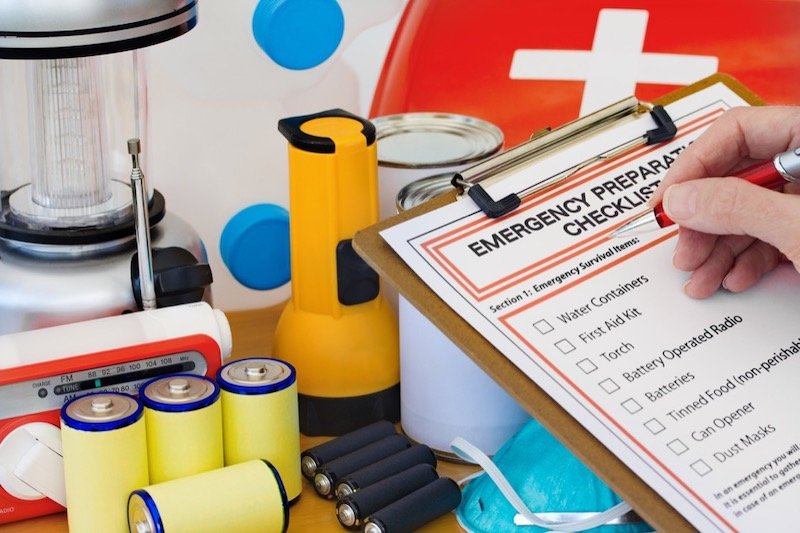
Assemble an emergency kit to bring with you in the event that you're escaping a wildfire, or to keep with you in the house if you're trapped inside during a wildfire. This emergency kit should include food for three days, three gallons of water for each person in your household, eyeglasses, change of clothing, medications, paper maps marked with evacuation routes, a change of clothes, first aid kit, flashlight, sanitation supplies, batteries, a battery-powered radio, car keys, cash and credit cards, identification (like passports), and pet food and water.
If possible, make a plan to bring some sentimental items like photo albums. If possible, plan to bring your cell phones, chargers and laptop computers.
Make a Household Evacuation Plan
Know the easiest routes to exit your home and arrive at safety. Avoid driving through wooded areas, if possible, or take a route that leaves a wooded area as quickly as possible. Have at least two routes planned out. Drive the routes several times to become familiar with the landmarks. You may not have access to GPS when driving the routes during a wildfire, so it's important to know how to do it without electronic assistance.
Stay Informed in the Community
Your community may have social media pages and emergency alert systems to keep you informed in the event of a wildfire. Stay up to date on your community's methods of passing emergency information from one person to another.
Download an Emergency Preparedness App
There are many apps that can be useful during a natural disaster like a wildfire.
- FEMA app - This app has real-time information about safety shelters and also information about how to survive a natural disaster.
- Red Cross app - The Red Cross app has information about first aid, including pet first aid.
- Nextdoor - The Nextdoor app connects neighbors to neighbors, and can be an invaluable method of passing information from one person to another.
- ICE Standard - The ICE Standard app contains your valuable medical information, which can be useful in the event of an emergency.
Create a Defensible Space
The first thing you can do to protect your home from wildfire is clear the area around your home of flammable vegetation. Dead and dying brush and firewood should all be kept between 30 and 100 feet away from your home, depending on where you live. Trees should be spaced a minimum of 10 feet apart from one another. Landscape your property with native plants, and keep them well-watered. Maintain your irrigation system to make it easy to keep your grass green.
- Remove debris from your roof and gutters.
- Prune away overhanging branches.
- Remove pine needles from the area around your home.
Maintaining a defensible space requires you to be a diligent property owner. Remove dead and dying landscaping as soon as possible, and watch your property for issues like growth of shrubs and volunteer trees.
Don't Remove All the Landscaping from Your Defensible Space
Some people are tempted to remove all their landscaping to protect their property from flaming material. This is not necessary, and in fact, could be detrimental to home protection. Well-tended landscaping serves as a buffer during a wildfire and may stop flying embers from reaching the house. Healthy, properly watered landscaping can be resistant to embers because it contains moisture that helps prevent it from igniting. Plant landscaping, but keep it healthy.
Retrofit Your Home
Many homes are not built to be fire safe. They are often made of flammable materials that can easily ignite in the event of a wildfire event. Fortunately, most homes can be retrofitted with non-combustible materials that can prevent the structure from burning. Some of the most useful things a homeowner can do to protect their home is to replace their old roof with a non-combustible roofing material, like metal or clay. Siding can be replaced with a non-flammable material like stucco, brick or stone.
Other things you can do to protect your home from wildfire includes:
- Install screening on vents
- Install spark arrestors in chimneys
- Install tempered glass on your windows
- Cover the undersides of your deck with fire-resistant material
Proof Your Roof
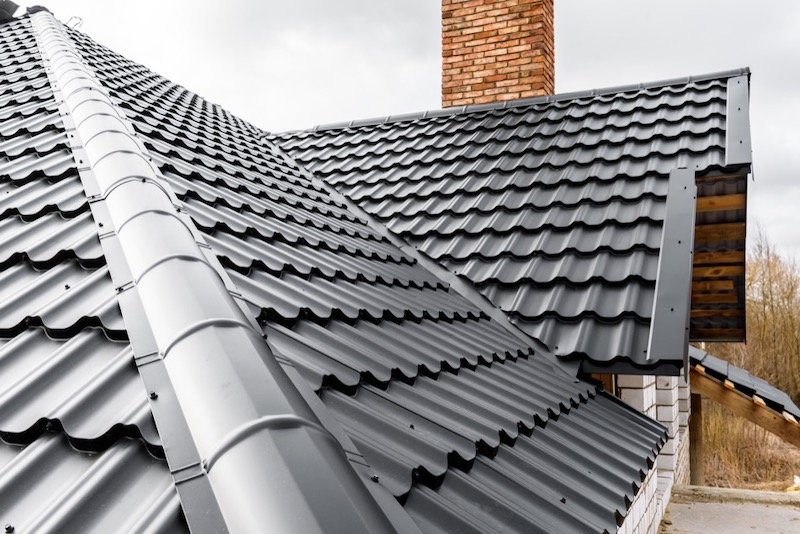
Slate, clay and metal are the most fireproof roofing materials available. If you're going to re-roof your home, ask your roofer about a fireproof roof. Some roofing materials, like clay and slate, are much heavier than standard roofing materials. Unless your home has been designed to hold extra weight, your roofer may have to retrofit your home to install one of these weightier roofs.
Metal is a lighter material. If you can't retrofit your home for a heavy roofing shingle, talk to your roofer about installing a metal roof. No matter what kind of material is installed on your roof, clear your roof regularly and keep your gutters clean. Creating a defensible space can help keep debris off your roof, by removing the branches and trees that might otherwise drop leaves and pine needles on your home.
Don't want to re-roof your home? Asphalt shingles, one of the most common roofing materials, is naturally fire resistant (though not fireproof), so if your home has asphalt shingles, it is already somewhat protected. The most flammable roofing material is wooden shingles. Work with a professional roofer to spray your wood shingles with flame-retardant chemicals to protect your roof the best you can. When you do have to install a new roof, consider installing a more flame-resistant material.
Keep Embers Out
Most homes have vents for emitting moist air and controlling humidity inside the home. These vents can become a point of entry for embers and sparks, if they don't have the proper protection. A 1/8-inch hardware cloth can help. Cover all vents in your home with a 1/8-inch hardware cloth. Don't block the vents entirely, as doing that could cause condensation and mold to form in your home.
You can use a staple gun to attach the hardware cloth to your home's exterior, but take care to avoid doing damage. If you don't feel comfortable doing the work yourself, hire an experienced contractor or handy man who can do the work for you.
Keep Embers Off
Prevent embers from igniting the outside of your home by coating the home's exterior with fire retardant gel that is combined with the water from either a swimming pool via a fire hose, garden hose, or pressure washer before you evacuate.
These systems which can be purchased for usually around a thousand dollars and can make a huge difference in preventing homes from burning down during a wildfire. The water and fire blocking gel lasts for up to 48 hrs and has proven to withstand high winds and flames. This has saved a countless homes over the years and will most likely be an important factor in saving homes from wildfires now and in the future.
Secure the Perimeter
Many people stack things close to their house that could potentially start a fire. Firewood and propane tanks are good examples of this. Relocate flammable items away from your house. This might take some time, as some items may be difficult to move. Keep your wooden shed away from your house, and if you have a wooden shed close to your house, move or replace it. Wooden fences should not be attached to your house. You can have the wooden fence around the perimeter of your property, but install a wall against your house to serve as a buffer. The wall should be made of non-flammable material like masonry or metal. Attach the fence to your buffer.
Securing the perimeter shouldn't be done just once; it should be done regularly. Over time, many homeowners will install things around the house without thinking about fire risk. Children may leave things piled around the garage or by the back door, while an easy-to-access firewood stack may creep into regular use just by one of the home's exits. Make a point of securing the perimeter of your home before the beginning of every fire season. Keep in mind that the fire seasons in many locations are getting longer, starting earlier, and lasting later in the year. The earlier you can create your defensible space, the better.
How to Prevent Wildfires
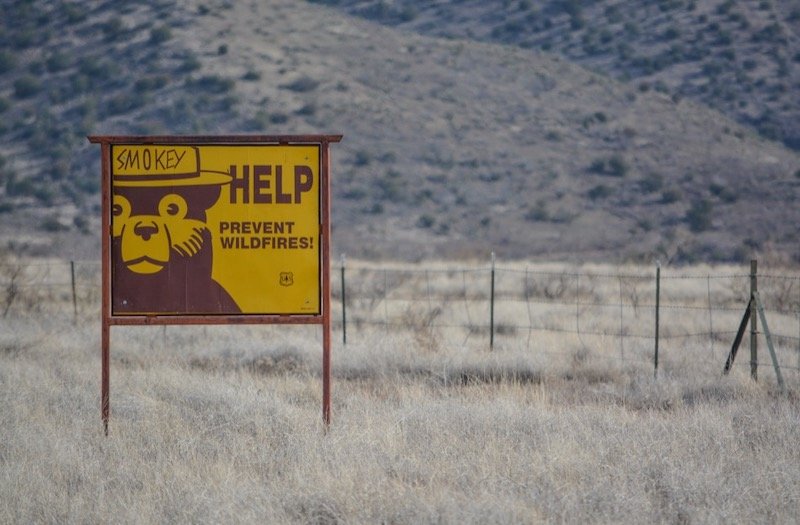
One of the best things you can do to protect yourself from wildfires is to practice wildfire prevention. Because human activity plays such a large role in wildfire rates around the United States, changing your behaviors while out in the world could help you avoid a potentially deadly situation.
Never leave a fire unattended without extinguishing it. This is the first rule of camping and spending time outdoors, whether you're in a national park or even your own backyard. Under the right conditions, a wildfire could start as easily in your own backyard as it could in a wooded area. If you must leave your fire, put it out completely.
If you see something, say something. When outdoors, be vigilant and aware of the natural surroundings. If you notice smoke, know where the smoke is coming from. Always report out-of-control fires to the authorities, even if you believe that someone else may have already done this for you. This applies whether you're in a wooded area or driving through a woodland.
Be thoughtful about your actions. Sometimes ordinary activities can have unintended consequences. Remember that people can start wildfires in nearly any outdoor setting, if the conditions are right. Dry weather, high heat and fuel are really all it takes to make a wildfire. Whether you're operating machinery in a natural setting, burning yard waste, or using sparklers at a fourth of July celebration, you could accidentally start a fire. Think about your actions, especially in high-risk areas.
Campfires and Bonfires
Campfires and bonfires can be dangerous when burned incorrectly or without permission. Whether you're going camping or just burning a fire in your backyard, these tips can help.
- Familiarize yourself with the rules and know when there's a burn-ban in your area.
- Use fire rings whenever they're available.
- If a fire ring is not available, create your own fire ring if it is allowed.
- Choose a place away from trees; never build a fire under overhanging branches.
- Dig a hole 6 inches deep and 2 feet in diameter.
- Ring the hole with large rocks.
- Clear 10 feet of space around the fire ring, eliminating all dry brush, grass and debris.
Any time you're thinking about making your own campfire or bonfire, always check with the authorities to find out whether fires are allowed in your area and under what conditions. Some forest services may not allow campers to build fires in homemade fire rings, or may require campers to get a permit before building a fire, or may require the camper to follow different rules than the ones written above. Always be aware of the rules in your area, and follow those rules exactly.
Smoking
Smoking is dangerous in wooded and dry areas, although recent reports state that the rate of wildfires caused by smoking have declined in the last several decades. This is partly due to a decline in the number of people who smoke, and it is partly due to a change in the way that cigarettes are designed. Cigarettes are made to not start fires whenever possible.
If smoking is allowed and you choose to do so, be careful about the way you do it. Always extinguish your cigarette fully. The best way to ensure that your cigarette is fully extinguished is to soak the cigarette in water. If you have no water to extinguish your cigarette, step on the butt with your shoe and then bury the remaining butt in sand. Never litter cigarette butts.
Burning Yard Waste
Burning yard waste is a common practice among homeowners, especially in small towns and rural areas. If you burn yard waste, be aware that your activities could cause an out-of-control fire, if you are not careful.
Some communities do not allow yard waste to be burned in their community while other towns may allow controlled burning if certain rules are followed. Know the rules in your area. Your town may dictate when, how and what you burn. Contact your local city hall or fire department to find out whether burning is allowed in your area. Burn restrictions can change daily, especially in certain areas that are prone to wildfires. Check back about burn restrictions every time you want to burn debris in your yard.
- Burn yard waste over dirt or gravel; do not burn on dry grass or near debris.
- Do not burn yard waste under a tree or overhang that could potentially catch fire.
- Water down the area before starting the fire.
- Have a water source nearby and ready to use if the fire should get out of control.
- Do not burn on a day that is windy or very hot.
- Do not burn yard waste on a slope.
- Keep the pile manageable and small, adding more to the pile as you go along.
- Extinguish the fire thoroughly with water before leaving it, turning the pile over several times with a shovel while dousing it with water.
Fireworks
Most communities have laws about fireworks. Some states allow fireworks of some kinds while others may have a full-out ban. Often, there is a relationship between the risk of wildfire in the area and the laws that dictate whether fireworks are allowed. Know the laws in your area and do not risk a fire by breaking the laws.
If you are allowed to light fireworks where you live, follow common sense rules to avoid starting a fire. Read the instructions before lighting fireworks, and follow the instructions carefully. Do not allow children to play with fireworks on their own. Never drink alcohol when using fireworks, or light fireworks under the influence of alcohol. Keep fireworks away from flammable materials like yard waste, a dry lawn, wooded areas and other flammable materials. Only burn one firework at a time, and always keep a hose nearby (and turned on), in the event that something happens to start a small fire.
How to Prevent Wildfires from Spreading
There are many things that homeowners can do to prevent wildfires from spreading in their community.
Plant Fire-Resistant Plants
There are no fireproof plants, but there are fire-resistant plants. These plants have a high moisture content and are resistant to ignition. Some examples of fire-resistant plants include aloe, California Fuchsia, and French lavender. The best fire-resistant plants for your home will be plants that are native to your area. Talk to your landscaper to get fire-resistant plants installed in your landscaping.
Thin Plants and Trees in the Defensible Zone
Do not eliminate plants from your yard entirely, but thin them to discourage wildfire from leaping from one plant to another in the area around your home. Leave at least 10 feet between trees. When planting new plants in your landscaping, leave space between specimens.
Water Your Landscaping
Keep your landscaping properly watered. How much you must water your landscape depends on what kind of plants are on your property. Talk to a landscaper for guidance. Adjust your watering based on the temperature outside, heat and humidity, and other environmental factors.
Prune Away Dead Branches and Shrubs
Keep your plants properly pruned to eliminate dry branches and dying plants. This requires regular maintenance throughout the year. Pick up dead leaves and cut away branches. While you're at it, remove objects from your landscaping like pine cones, acorns and other seeds that are flammable and can create small volunteer plants that will need clearing away at a later time.
Maintain the Height of Your Grass
Do not allow your grass to grow more than four inches tall. Avoid planting grasses that will become dry and brittle in the summer.
After a Wildfire
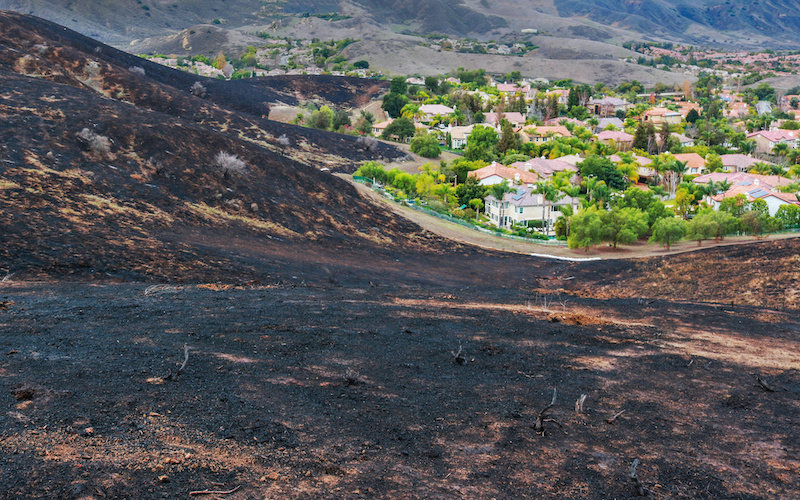
Once the fire is out, many homeowners are anxious to return to their property. Most of the time, fire authorities or local officials will prevent people from returning to their homes until the area is deemed safe. Do not attempt to return to your home until you are allowed. Returning early could lead to injury or further damage to property.
If you are allowed to return to your home, and your home is still in useable condition, inspect the site thoroughly. Go in your attic, check your crawl space, look under your deck and in other hidden parts of your home. Look for embers, signs of smoke, active flames and damage. Even if your home appears to be in satisfactory condition, there could be unseen damage.
Check the area periodically during the first day to ensure that no potentially dangerous embers or coals are in the area. Coals can continue to be hot for hours or even days after the fire has left. Failure to notice a burning coal could lead to a potential flare-up, which could cause more fire and more damage.
If your property is damaged in any way, contact your insurance company. Standard homeowners insurance will cover damage from wildfires. Your insurer can give you guidance that can help you start a claim. Rebuilding after a wildfire can take time. Even if your home has survived, other homes or businesses in your community may be gone.
Rebuilding Becomes an Opportunity
After the fire, there may be more effort from leadership in your area to protect your community from future wildfires. This is an excellent chance to join the conversation and become a part of the solution. Wildfires are a natural event, and no amount of community planning can ever fully eliminate the risk that comes from living in a fire-prone area. However, when communities come together to make their towns more fire safe, lives can be saved. Work together with your neighbors to improve your fire safety and communication during natural disasters.
Be Aware of the Risks
Wildfires can strip the landscape of trees and plants that hold the earth in place. Erosion can impact topography and water quality in your area. If you live at the base of a large hill or mountain, mudslides may be a risk in the future. The faster vegetation returns to your area, the better. This may be something to address at community meetings. In addition, erosion can lead to sediment that washes away into local water supplies, which can affect water quality in your area.
Be Ready, Be Safe
You can help prevent wildfires. Be careful when spending time outdoors, whether you're on your own property or in a national park. Teach your children how to be fire safe, and include them in your disaster planning to reiterate how real and dangerous wildfires can be. It only takes one spark to start a wildfire that can destroy a community and take lives.
Keep your home wildfire safe by evaluating your property on a regular basis and by maintaining your yard. Get involved in community efforts to protect your neighborhood or town. When making home improvements, keep fire safety in mind. Remember that wildfires can happen at any time, and failure to be prepared could have devastating results. Following these tips, you could protect yourself, your family and even people around you from wildfire.
Other Helpful Resources
- https://www.ready.gov/wildfires
- https://www.nfpa.org/Public-Education/Fire-causes-and-risks/Wildfire
- https://www.nationalgeographic.com/environment/natural-disasters/wildfires/
- https://www.fema.gov/media-library-data/1409003859391-0e8ad1ed42c129f11fbc23d008d1ee85/how_to_prepare_wildfire_033014_508.pdf
- https://www.redcross.org/get-help/how-to-prepare-for-emergencies/types-of-emergencies/wildfire.html
- https://www.weather.gov/safety/wildfire
- https://www.cdc.gov/disasters/wildfires/index.html
